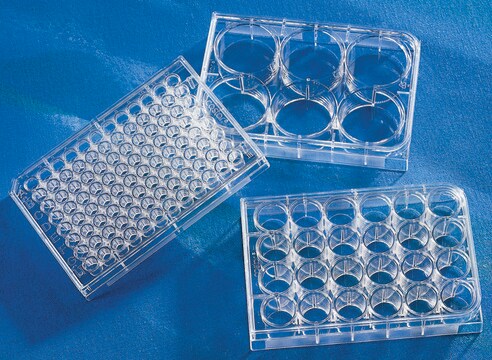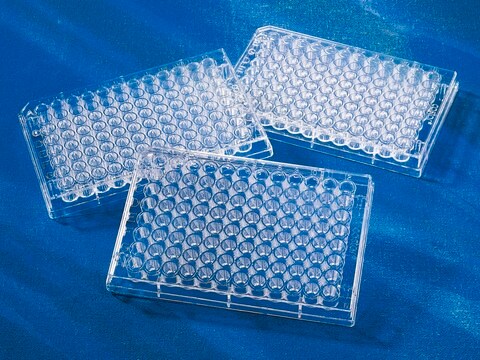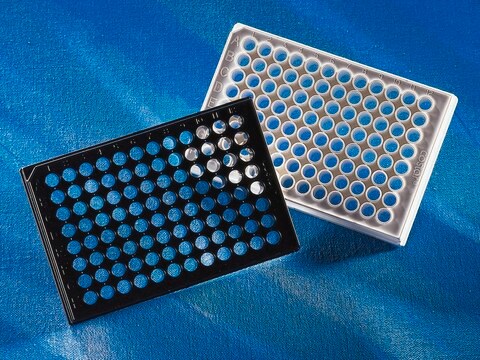CLS3595
Corning® 96 Well TC-Treated Microplates
size 96 wells, polystyrene plate, flat bottom, case of 50 (individually wrapped), sterile, lid (low evaporation)
Synonym(s):
96 well, cell culture plate, multi well plates, multiple well plates, not treated, tissue culture plates
About This Item
Recommended Products
material
clear bottom
flat bottom
polystyrene plate
round clear wells
description
growth area .32cm2 (low evaporation lid)
sterility
sterile; γ-irradiated by SER-TAIN™ process
sterile
quality
tissue-culture treated
feature
lid (low evaporation)
skirt
packaging
case of 50 (individually wrapped)
manufacturer/tradename
Corning 3595
size
96 wells
well diam.
6.4 mm
well volume
360 μL
well working volume
75-200 μL
color
clear
binding type
Tissue Culture (TC)-treated surface
Looking for similar products? Visit Product Comparison Guide
General description
Application
- short-term organoid growthassay
- enzyme assays
- crystal violet biofilm assay
Features and Benefits
- Possess flat bottoms accommodating a total volume of 360 µL.
- Suggested working volumes ranging from 75 to 200 µL.
- Subjected to treatment to enhance cell attachment under optimal conditions.
- Nonreversible low evaporation lids with condensation rings to reduce contamination.
- Sterilized via gamma radiation
Legal Information
Certificates of Analysis (COA)
Search for Certificates of Analysis (COA) by entering the products Lot/Batch Number. Lot and Batch Numbers can be found on a product’s label following the words ‘Lot’ or ‘Batch’.
Already Own This Product?
Find documentation for the products that you have recently purchased in the Document Library.
Customers Also Viewed
Our team of scientists has experience in all areas of research including Life Science, Material Science, Chemical Synthesis, Chromatography, Analytical and many others.
Contact Technical Service



